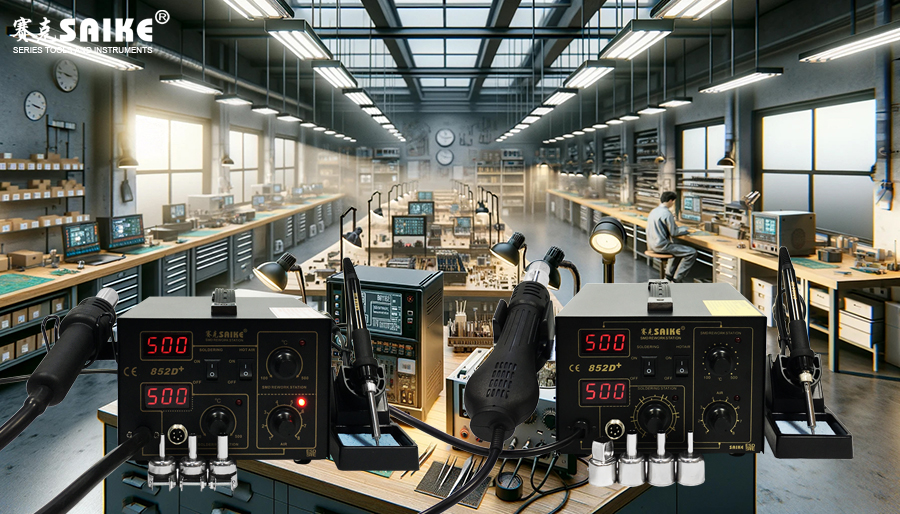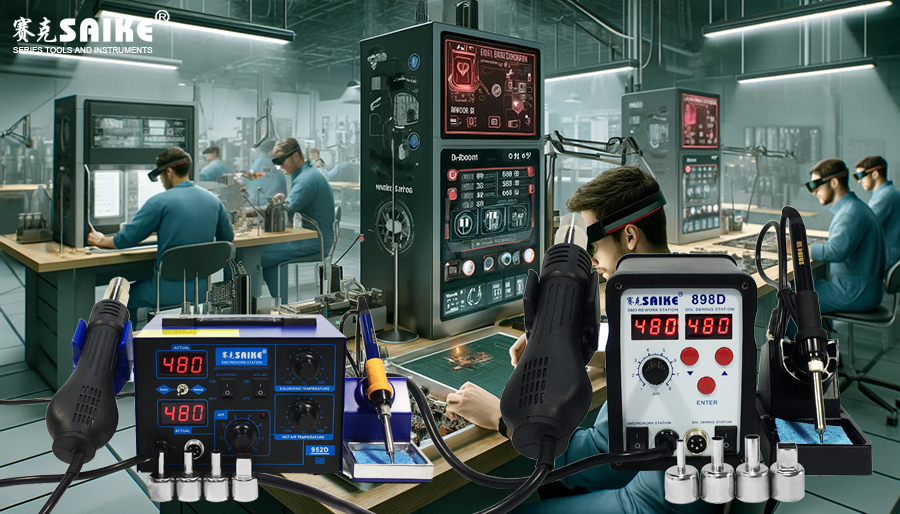
SK-YJ000RFCHT-KP 100004
Hot air rework stations, as key equipment in the field of electronic manufacturing and maintenance, come in a variety of types based on different application requirements and functions. Each type of hot air rework station has its unique features and advantages, suitable for different operating environments and tasks. This article will introduce several common types of hot air rework stations and their characteristics.
I. Basic Hot Air Rework Station
Characteristics:
– Cost-effective: The basic hot air rework station is moderately priced, suitable for beginners or low-budget repair shops.
– Easy to operate: Usually equipped with basic temperature and air speed controls, making it easy to operate.
– Basic functionality: Although the function is relatively basic, it is sufficient to handle most standard soldering and desoldering tasks.
Application: Suitable for daily maintenance work and small electronic projects, not recommended for high-precision or large-scale production.
II. Digitally Controlled Hot Air Rework Station
Characteristics:
– Precise control: Equipped with digital temperature and air speed displays, providing more precise control.
– Programmable settings: Allows users to preset multiple soldering modes and temperature curves as needed.
– Multifunctional interface: LCD display or touchscreen makes operation more intuitive.
Application: Suitable for professional electronic maintenance and production environments that require high-precision control.
III. Hot Air Rework Station with Additional Functions
Characteristics:
– Integrated multifunction: Includes not only a hot air gun but also a solder sucker, preheating station, and other auxiliary equipment.
– High efficiency: Able to perform multiple operations simultaneously, significantly improving work efficiency.
– Suitable for complex tasks: Especially suitable for desoldering multilayer circuit boards and large integrated circuits.
Application: Suitable for high-end electronic repair services and complex circuit board rework.
IV. Portable Hot Air Rework Station
Characteristics:
– Lightweight design: Small size and light weight, easy to carry.
– Suitable for on-site maintenance: Ideal for repair work that requires on-site service.
– Power adaptability: Can be equipped with a car power adapter, suitable for mobile maintenance.
Application: Especially suitable for on-site maintenance, emergency services, and environments with limited workspace.
V. High-end Industrial Hot Air Rework Station
Characteristics:
– Ultra-high performance: Designed for large-scale production, capable of continuous work, and has extremely high durability and reliability.
– Intelligent system: Integrates advanced sensors and automation technology, such as a closed-loop feedback control system.
– Modular design: Facilitates upgrades and maintenance to adapt to changing industrial needs.
Application: Suitable for large-scale electronic manufacturing and environments that require continuous high-intensity use.
VI. Summary
Choosing the right hot air rework station should be based on specific work requirements, operating environments, and budgets. Whether it’s simple daily maintenance or complex industrial manufacturing, there are corresponding hot air rework stations on the market that can meet the needs of different users. Understanding the characteristics of each type helps users make the best choice to improve work efficiency and quality.


